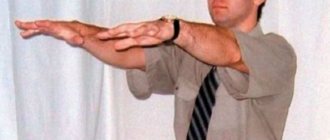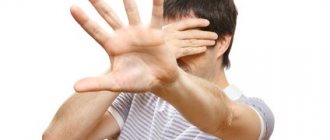Complaints of dizziness when bending over can be present in a variety of pathologies. But in the vast majority of cases, this is a classic symptom of circulatory or innervation disorders. Also, a malfunction of the vestibular apparatus may manifest itself in a similar way. But, again, this may be directly related to pathologies of blood vessels, cranial nerves and the cervical spine.
Dizziness when tilting the head is a manifestation of oxygen deficiency due to a decrease in the level of blood flow through the cerebral blood vessels. Brain tissues are highly sensitive to glucose and oxygen deficiency. They are delivered by red blood cells through arterial blood flow.
Blood supply to the brain structures is carried out using four paired arteries. Two sleepy ones are located on the sides of the neck. The two posterior vertebrates pass within the uncovertebral processes along the lateral sides of the cervical vertebral bodies. The carotid arteries supply blood to the lateral and anterior lobes of the brain. The posterior vertebral arteries are responsible for the blood supply to the optic and auditory nerves, the vestibular apparatus, and the posterior lobes of the brain.
When blood flow is disrupted, the following occurs:
- free radicals and breakdown products accumulate in cells;
- ischemia begins at the cellular level;
- When a significant number of cells die, a cerebral infarction develops.
The first clinical sign of cerebrovascular insufficiency is dizziness when tilting the head in different directions. We will tell you what reasons can provoke this condition in the article we bring to your attention. It also describes the main clinical symptoms, when they appear, you should immediately call an ambulance. If you experience dizziness, try to see a neurologist as soon as possible.
In Moscow, you can make an appointment right now with an experienced neurologist in our manual therapy clinic. The first consultation is provided to each client completely free of charge. During the appointment, the doctor will conduct an examination and make a preliminary diagnosis. If necessary, he will recommend additional examinations. After an accurate diagnosis is made, the patient will be prescribed an individual course of therapy.
Causes of dizziness when tilting your head down
Dizziness when tilting your head down is a sign of vertebrobasilar insufficiency. This is a pathological condition in which, due to changes in the course of the posterior vertebral arteries, any change in the position of the head provokes a lack of blood supply to the structures of the brain.
The main cause of dizziness when tilting the head is degenerative dystrophic changes in the cartilaginous tissues of the intervertebral discs. This is osteochondrosis and its negative consequences, such as instability of the position of the vertebral bodies, protrusion, extrusion and disc herniation.
Let's try to analyze these causes of dizziness when bending down in more detail. Let's start with the principle of blood supply to cerebral structures. Arterial blood enters the systemic circulation from the left ventricle. Movement along the aorta begins. Then branching into smaller arteries occurs. One of the branches of the subclavian artery goes to the space between the sixth and seventh cervical vertebrae. Here it comes out and, moving along the uncovertebral hook-shaped processes, reaches the oval opening in the cranium. This is where the extracranial section of the artery ends. After entering the cranium, the intracranial section of the artery begins. It can also be subject to stenosis due to some negative factors.
The cervical spine is characterized by increased lability, due to which a person can make a wide variety of head movements. Neck mobility is ensured by the special structure of the vertebral bodies and relatively high intervertebral discs. There is no disc between the first and second cervical vertebrae. They are connected to each other using a joint. This provides greater mobility, but can also cause a lot of trouble. Very often, modern people are diagnosed with subluxation or dislocation of the first cervical vertebra. This has an extremely negative impact on the state of brain structures. Such people often suffer from symptoms of increased intracranial pressure.
The cervical vertebrae have three types of processes:
- arcuate - they, together with the vertebral bodies, form the oval opening of the spinal vertebral canal;
- spinous - responsible for protecting and ensuring the performance of the locomotor system;
- uncovertebral - form a kind of canal along the lateral surfaces of the cervical vertebrae to protect the posterior vertebral arteries.
All structural tissues of the cervical spine are balanced and provide complete protection to the spinal cord structures, radicular nerves and cerebral blood vessels.
What happens with the development of cervical osteochondrosis:
- the cartilaginous tissues of the intervertebral discs do not have their own circulatory network; they receive fluid and nutrients dissolved in it only with the active contractile work of the surrounding muscles;
- if a person is engaged in sedentary work with prolonged tension in the neck muscles, then the diffuse nutrition of the cartilage tissue of the fibrous ring is disrupted;
- it begins to take fluid from the nucleus pulposus located inside it;
- the corpus pulposum loses its mass and loses its ability to maintain the normal height of the intervertebral disc;
- this creates conditions for instability of the position of the vertebral bodies, they begin to shift relative to their axis;
- pressure is exerted on the radicular nerves and their branches;
- in response, an inflammatory reaction develops and a pain syndrome appears with muscle fiber tension;
- it fixes the incorrect position of displaced vertebral bodies;
- against this background, there is a change in the patency of the posterior vertebral arteries towards narrowing;
- The structures of the brain and vestibular apparatus do not receive sufficient arterial blood and the person experiences so-called orthostatic dizziness.
There are other causes of dizziness when tilting the head down, in particular, they include:
- use of certain medications without a doctor’s prescription;
- intoxication, including alcohol or nicotine poisoning (after smoking);
- inflammation of the neck muscles in the area of the carotid or posterior vertebral arteries;
- heart and vascular failure;
- atherosclerosis of cerebral vessels with the formation of cholesterol plaques;
- diabetes mellitus accompanied by diabetic angiopathy;
- damage to paired cranial nerves, causing spasm of blood vessels;
- high levels of cortisol, adrenaline and other stress hormones in the human body;
- arterial hypertension;
- liver and kidney failure;
- high level of intracranial pressure;
- tumor processes;
- inflammation of the middle ear, etc.
Only an experienced doctor can exclude all possible causes of dizziness when tilting the head. Therefore, do not ignore this sign, but urgently make an appointment with a neurologist. Remember that in some cases this symptom may indicate the development of an acute cerebrovascular accident. In the event of a stroke, timely medical care allows a person to fully maintain their ability to work and prevent the development of paralysis.
Dizziness: causes and treatment
(from the book Neurology. G.D. Weiss. Edited by M. Samuels. Translated from English - M., Praktika, 1997. -640 p.)
Dizziness is one of the most common and at the same time one of the most “disliked” complaints by doctors. The fact is that dizziness can be a symptom of a wide variety of neurological and mental diseases, diseases of the cardiovascular system, eyes and ears.
I. Definition. Since patients can call a variety of sensations “dizziness,” during the interview it is necessary first of all to clarify the nature of these sensations. They can usually be classified into one of four categories.
A. Vestibular dizziness (true dizziness, vertigo) is usually caused by damage to the peripheral or central part of the vestibular system. It manifests itself as the illusion of movement of one’s own body or surrounding objects. In this case, sensations of rotation, falling, tilting or swaying occur. Acute dizziness is often accompanied by autonomic symptoms (nausea, vomiting, increased sweating), anxiety, imbalance and nystagmus (the latter sometimes leading to blurred vision).
B. Fainting and pre-syncope. These terms refer to temporary loss of consciousness or the feeling of impending loss of consciousness. In a pre-fainting state, increased sweating, nausea, a feeling of fear and darkening of the eyes are often observed. The immediate cause of fainting is a drop in cerebral blood flow below the level necessary to supply the brain with glucose and oxygen. Fainting and presyncope usually develop against the background of arterial hypotension, heart disease or due to autonomic reactions, and the tactics for these conditions are completely different than for vestibular vertigo.
B. Impaired balance is characterized by instability, a wobbly (“drunk”) gait, but not true dizziness. The cause of this condition is damage to various parts of the nervous system that provide spatial coordination. However, patients with cerebellar, visual, extrapyramidal and proprioceptive disorders often define the feeling of unsteadiness as “dizziness.”
D. Vague sensations , often described as dizziness, occur with emotional disorders, such as hyperventilation syndrome, hypochondriacal or hysterical neurosis, depression. Patients usually complain of “brain fog,” feeling slightly intoxicated, lightheaded, or fear of falling. These sensations are quite clearly different from the sensations associated with vestibular dizziness, fainting and balance disorders. Since any dizziness, regardless of its cause, can cause anxiety, it cannot serve as evidence of the psychogenic nature of the disease.
D. Some patients with complaints of dizziness find it difficult to describe their sensations. In this case, it is advisable to conduct provocative tests.
1. The standard set of provocative tests for dizziness includes:
A. Orthostatic test. b. Forced hyperventilation for 3 minutes. V. Sharp turns while walking or spinning in a circle while standing. d. Nilen-Barany test for positional vertigo. d. Valsalva maneuver, which increases dizziness caused by craniovertebral anomalies (for example, Arnold-Chiari syndrome) or perilymphatic fistula, and also causes lightheadedness in patients with cardiovascular diseases.
2. After each test, it is necessary to ask whether the resulting dizziness resembles the sensation that worries the patient. For orthostatic hypotension, hyperventilation syndrome, positional vertigo and many vestibular disorders, test results are well reproducible, which provides important diagnostic information.
II. Clinical examination of patients with vestibular vertigo. In order to evaluate the results of research, it is necessary to have a good knowledge of the relationships of the vestibular system with the oculomotor, auditory and spinocerebellar systems. There are two main types of vestibular reflexes. Thanks to the vestibulo-ocular reflexes, gaze fixation on the objects under consideration is maintained, that is, the constancy of the image on the retina. Vestibulospinal reflexes provide the positioning of the head and torso necessary for coordinated movements and maintaining an upright posture.
A. Nystagmus in patients with dizziness is the most important sign of vestibular disorders. Knowing a few simple physiological principles can help you avoid common mistakes in interpreting nystagmus.
1. Canal-ocular reflexes. Each horizontal semicircular canal is connected through the neurons of the brain stem with the oculomotor muscles in such a way that a decrease in impulses from it causes the eyes to deviate towards this canal, and an increase causes movement in the opposite direction. Normally, the impulses constantly flowing into the brain stem from the right and left semicircular canals and otolith organs are equal in intensity. A sudden imbalance of vestibular afferentation causes a slow eye deviation that is interrupted by rapid cortical activation-induced corrective eye movements in the opposite direction (nystagmus).
2. Lesions of the labyrinth usually cause a decrease in impulses from one or more semicircular canals. In this regard, with acute unilateral lesions of the labyrinth, unidirectional nystagmus occurs, the slow phase of which is directed towards the affected ear, and the fast phase - in the opposite direction. Nystagmus can be rotatory or horizontal. It intensifies when the eyes are moved towards its fast phase (that is, towards the healthy ear). With acute vestibular dysfunction, surrounding objects usually “rotate” in the direction of the fast phase of nystagmus, and the body in the direction of the slow phase. Patients sometimes better determine the direction of rotation with their eyes closed. In a standing position, patients deviate and fall predominantly towards the slow phase of nystagmus (that is, the affected ear).
3. Central nystagmus. Alternating nystagmus, which changes its direction depending on the direction of gaze, is more often observed with drug intoxication, lesions of the brain stem, or pathological processes in the posterior cranial fossa. Vertical nystagmus almost always indicates damage to the brainstem or midline cerebellar structures.
B. Cold test. Normal physiological stimuli simultaneously affect both labyrinths. The value of the cold test is that it allows you to study the function of each labyrinth separately. The study is carried out with the patient lying down; the head is raised at an angle of 30°. The external auditory canal is washed with cold water, thereby simulating unilateral vestibular hypofunction (observed, for example, with vestibular neuronitis or labyrinthitis). Cold water causes movement of the endolymph, as a result of which the impulse from the horizontal semicircular canal decreases. Normally, this leads to nausea, dizziness and horizontal nystagmus, the slow phase of which is directed in the direction being examined, and the fast phase in the opposite direction. Monitor the direction, duration and amplitude of nystagmus. A decrease in response on one side indicates damage to the labyrinth, vestibulocochlear nerve, or vestibular nuclei on that side. The study is contraindicated if the eardrum is damaged.
B. Electronystagmography. The retina is negatively charged in relation to the cornea, so when the eyes move, the electric field changes and an electric current occurs. Recording this current (and therefore eye movements) using electrodes placed around the eyes is called electronystagmography. This method allows you to quantify the direction, speed and duration of nystagmus. Electronystagmography is used in functional vestibular tests to record spontaneous, positional, cold and rotational nystagmus. Electronystagmography can be used to record nystagmus with eyes closed. This provides important additional information since nystagmus is often suppressed during gaze fixation.
D. Hearing loss and tinnitus can occur with diseases of the peripheral vestibular system (inner ear or vestibulocochlear nerve), if the hearing aid is involved in the process. When the central nervous system is damaged, hearing is rarely impaired. For vestibular vertigo, audiological testing often helps establish the diagnosis.
1. In pure-tone audiometry, the threshold for the perception of sounds of different frequencies is measured. For differential diagnosis of sensorineural and conductive hearing loss, the auditory threshold for air and bone conduction of sound is compared.
2. For a more accurate audiological assessment, speech perception and intelligibility, the phenomenon of accelerated increase in sound volume and tone decay are additionally examined.
D. Stabilography - the study of balance using a moving platform - allows you to quantify involuntary postural reflexes that prevent falls, as well as the role of information from various senses in maintaining balance.
E. Functional vestibular tests, electronystagmography and stabilography are complex and labor-intensive procedures. They cannot replace a thorough clinical examination, and for non-vestibular vertigo they are not necessary.
III. Diagnosis and treatment of diseases accompanied by vestibular vertigo. The two most common causes of vestibular vertigo are vestibular neuronitis and benign positional vertigo.
A. Vestibular neuronitis (acute peripheral vestibulopathy, vestibular neuritis).
1. General information. Vestibular neuronitis is characterized by a sudden, prolonged attack of dizziness, often accompanied by nausea, vomiting, loss of balance, and a feeling of fear. Symptoms worsen with head movements or changes in body position. Patients tolerate this condition extremely hard and often do not get out of bed. Spontaneous nystagmus is characteristic, the slow phase of which is directed towards the affected ear. On the same side, the reaction to a cold test decreases. Positional nystagmus is often noted. Sometimes there is noise and a feeling of fullness in the ear. Hearing does not decrease, and the results of audiological examination remain normal. There are no focal symptoms indicating damage to the brain stem (paresis, diplopia, dysarthria, sensory disturbances). The disease occurs in adults of any age. Acute dizziness usually resolves spontaneously within a few hours, but may recur over the next few days or weeks. Subsequently, residual vestibular dysfunction may persist, manifested by imbalance, especially pronounced when walking. In almost half of cases, attacks of dizziness recur after several months or years. The cause of vestibular neuronitis is unknown. A viral etiology has been suggested (as with Bell's palsy), but there is no evidence of this. Vestibular neuronitis is more of a syndrome than a separate nosological form. Neurological and otoneurological examinations help establish the peripheral nature of vestibular dysfunction and exclude lesions of the central nervous system, which usually have a less favorable prognosis.
2. Therapeutic measures. A few simple techniques can significantly reduce dizziness.
1) Since head movements and external stimuli increase dizziness, the patient is recommended to lie in a darkened room for 1-2 days.
2) Gaze fixation reduces nystagmus and dizziness in peripheral vestibular disorders. Often the condition improves - and even to a greater extent than when lying with eyes closed - if patients fix their gaze on some nearby object (for example, on a picture or a raised finger).
3) Since mental stress increases dizziness, it is advisable to combine gaze fixation with mental relaxation methods.
4) In case of persistent vomiting, intravenous fluid administration is indicated to prevent dehydration.
5) Measures for persistent dizziness. With vestibular neuronitis, the condition does not improve significantly in the first 1-2 days. The person feels seriously ill and is afraid of repeated attacks of dizziness. In such a situation, it is important to reassure the patient, convincing him that vestibular neuronitis and most other acute vestibular disorders are not dangerous and pass quickly. It should also be explained that within a few days the nervous system will adapt to the imbalance between both vestibular organs (even if one of them is irreversibly damaged) and the dizziness will stop.
6) Vestibular gymnastics, which stimulates central compensatory processes, begins a few days after the acute manifestations subside.
B. Benign positional vertigo
1. General information. Benign positional vertigo is probably the most common vestibular disorder. Dizziness in this case appears only when moving or changing the position of the head, especially when tilting it back and forth. This condition often occurs when the patient turns over from his back to his side and suddenly, at a certain position of the head, feels that “the room has moved.” Dizziness usually lasts a few seconds. Often patients know in what position of the head it occurs. Changes in head position can worsen vertigo in vestibular neuronitis and many other peripheral or central vestibular disorders, but in benign positional vertigo, symptoms occur only with certain movements and are absent at other times.
2. Differences from positional vertigo of central origin. Positional vertigo can also occur with many other diseases, including lesions of the brain stem (multiple sclerosis, stroke or tumor). In order to distinguish benign positional vertigo from more dangerous diseases of the central nervous system, the Nilen-Barany test is performed. The seated patient is tilted with his head at an angle of 45°, after which he is lowered onto his back. Then the test is repeated, after first turning the thrown back head first to the right, then to the left. The result is assessed by the appearance of nystagmus and dizziness. The latent period, duration, direction and exhaustibility of nystagmus are of important diagnostic importance. In benign positional vertigo, the latent period of nystagmus and dizziness is several seconds, the nystagmus is rotatory, and its fast phase is usually directed towards the affected ear. Nystagmus and dizziness are usually short-lived (less than 30 s) and decrease with repetition of the test (depletion of nystagmus). The Nilen-Barany test can confirm the diagnosis of benign positional vertigo. However, a negative result does not exclude this disease, since its symptoms are transient and are not always triggered by head movement.
3. Etiology. Benign positional vertigo can occur after traumatic brain injury, a viral disease, otitis media or stapedectomy, as well as with certain intoxications (for example, alcohol and barbiturates). Idiopathic cases of the disease, apparently, in most cases are associated with cupulolithiasis, a degenerative process with the formation of otoconial deposits in the cupula of the frontal semicircular canal, resulting in a sharp increase in the sensitivity of this canal to gravitational influences when the position of the head changes.
4. The course of the disease can be very different. In many cases, symptoms resolve on their own within a few weeks and then do not return until months or years later. Sometimes a short-term attack occurs only once in a lifetime. Only rarely does positional vertigo persist for a long time.
5. Treatment. For symptomatic therapy, the above remedies are used, but they are often ineffective. With careful repetition of movements that provoke dizziness, pathological reactions are gradually “exhausted.” Some believe that vestibular exercises, which include provocative head movements, speed up recovery. Patients are advised to hold their head in a position that usually causes dizziness for 30 seconds. This simple exercise, performed 5 times every few hours, in most cases brings improvement within a few weeks. If such vestibular gymnastics is accompanied by too unpleasant sensations, then a soft corset is used that immobilizes the neck and prevents the head from tilting in an unfavorable direction. As with vestibular neuronitis, it is important to convince the patient that, despite the extremely unpleasant sensations, the disease will soon pass and is not life-threatening. It is extremely rare for severe persistent positional vertigo to transect the ampullary nerve coming from the frontal semicircular canal on the affected side.
B. Post-traumatic dizziness. Despite the fact that the labyrinth is protected by a bone sheath, its thin membranes are easily damaged by injury. Uncomplicated concussion is accompanied by dizziness in more than 20% of cases. With traumatic brain injury, transient autonomic disorders (palpitations, hot flashes, increased sweating), which are accompanied by non-vestibular dizziness, are also possible. Post-traumatic dizziness manifests itself in two main syndromes.
1. Acute post-traumatic dizziness. Vestibular dizziness, nausea and vomiting can occur immediately after injury due to the sudden shutdown of one of the labyrinths (labyrinth shock). Less commonly, dizziness is caused by transverse or longitudinal fractures of the temporal bone, which are accompanied, respectively, by hemorrhage in the middle ear or damage to the eardrum with bleeding from the external auditory canal.
Clinical picture. Dizziness is constant. Characterized by spontaneous nystagmus with a slow phase directed towards the lesion, and imbalance with a tendency to fall in the same direction. Symptoms intensify with sudden movements of the head and in a position where the damaged labyrinth is at the bottom.
2. Post-traumatic positional vertigo. Within a few days or weeks after the injury, repeated short-term attacks of vestibular dizziness and nausea may occur, which are provoked by head movement.
A. The clinical picture is the same as for benign positional vertigo.
b. Forecast. In most cases, spontaneous remission occurs within 2 months after injury, and within 2 years in almost all.
3. Perilymphatic fistula. The membranous labyrinth filled with endolymph is surrounded by the perilymphatic space. When a rupture occurs in the area of the oval or round opening, a perilymphatic fistula can form, through which changes in pressure in the middle ear cavity are directly transmitted to the inner ear. The cause of a perilymphatic fistula can be, in particular, barotrauma (from straining, sneezing, coughing, diving).
A. Clinical picture. Characterized by intermittent or positional vestibular vertigo and variable sensorineural hearing loss. Worsening often occurs with elevation (including rapid ascent in an elevator) and with physical exertion similar to the Valsalva maneuver (straining or lifting). Sometimes dizziness occurs with loud sounds (Tullio's symptom).
b. Diagnostics. A perilymphatic fistula should be suspected when vestibular or auditory disturbances appear after trauma. However, due to the variability of symptoms, it can be difficult to distinguish from other diseases (Meniere's syndrome, benign positional vertigo, craniovertebral anomalies). There are no pathognomonic signs in the study of pressor nystagmus, electronystagmography, or stabilography. Perilymphatic fistula is probably one of the common causes of vestibular vertigo of “unexplained etiology.”
V. Treatment. The perilymphatic fistula usually closes spontaneously, which is accompanied by the disappearance of symptoms. In persistent cases, if a perilymphatic fistula is suspected, surgical intervention is indicated (tympanotomy with restoration of the integrity of the oval or round foramen). After surgery, vestibular symptoms usually improve, but hearing is rarely restored.
G. Meniere's syndrome
1. General information. Meniere's syndrome usually begins between 20 and 40 years of age. It is characterized by sudden attacks of severe vestibular vertigo, lasting from a few minutes to several hours. Before an attack, and sometimes after it, there is a feeling of stuffiness and fullness, or noise in the ear, transient hearing loss. After an attack, imbalance may persist for a long time, especially noticeable when walking.
2. The course is characterized by remissions and exacerbations. At the onset of the disease, sensorineural hearing loss (mainly for low sounds) is episodic. As a result of repeated attacks, hearing progressively decreases, but periods of improvement are possible.
3. Pathogenesis. The main morphological changes in Meniere's syndrome are stretching of the walls and an increase in the volume of the endolymphatic space (endolymphatic hydrops). The cause may be impaired absorption of fluid in the endolymphatic sac or obstruction of the endolymphatic duct.
4. Treatment. During an attack, bed rest and vestibulolytic drugs are prescribed. The rational choice of drugs for the prevention of attacks and the assessment of their effectiveness are difficult due to insufficient knowledge about the pathogenesis of the disease and the unpredictability of its course (including the possibility of long-term spontaneous remissions). According to recent studies, any of the existing treatment regimens (including placebo) causes temporary improvement in approximately 70% of patients.
A low-sodium diet in combination with diuretics (thiazides or acetazolamide) has been recommended for the treatment of Meniere's syndrome; it has been suggested that this may reduce fluid accumulation in the endolymphatic space. However, the pathophysiological feasibility of this therapy has not been proven, and in recent years it has been used less frequently.
5. In a small proportion of cases, for frequent, severe, treatment-resistant attacks, surgical treatment is indicated. There is no ideal surgery for Meniere's syndrome. Shunting of the endolymphatic sac reduces dizziness in 70% of patients, but in 45%, hearing continues to decline after surgery. Destructive operations (selective transtemporal transection of the vestibular part of the vestibulocochlear nerve, labyrinthectomy or translabyrinthine vestibulectomy) are indicated for persistent severe dizziness and severe unilateral hearing loss.
6. Differential diagnosis
A. In all cases, it is necessary to exclude a tumor of the cerebellopontine angle (including schwannoma of the vestibular-cochlear nerve. Tumors of this location cause noise in the ear, hearing loss, imbalance, but only rarely - attacks of dizziness.
b. The cause of attacks of dizziness and hearing loss can also be infectious labyrinthitis, perilymphatic fistula, Cogan's syndrome, and hyperviscosity syndrome.
V. Congenital syphilis. Symptoms of labyrinthine lesions in congenital syphilis often appear only in middle age and can mimic Meniere's syndrome. Treponema pallidum persisting in the temporal bone causes chronic inflammation leading to endolymphatic hydrops and labyrinthine degeneration. The course is progressive. As a result, both ears are affected. All patients with bilateral Meniere-like symptoms should be examined for latent syphilis using treponemal reactions (primarily RIF-ABS), since non-treponemal reactions (including the reagin rapid test and the VDRL reaction) in syphilitic labyrinthitis can give negative results.
D. Labyrinthitis
1. Bacterial labyrinthitis. When there is a bacterial infection of the middle ear or mastoid process (such as chronic otitis media), bacterial toxins can cause inflammation of the structures of the inner ear (serous labyrinthitis). Symptoms may be minimal at first, but they gradually worsen without treatment. Direct infection of the labyrinth (purulent labyrinthitis) is possible with bacterial meningitis or disruption of the integrity of the membranes separating the inner ear from the middle ear. Patients experience acute vestibular dizziness, nausea, hearing loss, fever, headache and ear pain. Purulent labyrinthitis is a dangerous disease that requires early diagnosis and antibiotic therapy.
2. Viral labyrinthitis. Damage to the auditory and vestibular organs is observed with various viral infections, including influenza, herpes, rubella, mumps, viral hepatitis, measles, and infection caused by the Epstein-Barr virus. Most patients recover on their own.
E. Functional vertigo occurs as a result of a disruption in the interaction between the vestibular, visual and somatosensory systems, which normally work together to provide spatial orientation. Dizziness can also be caused by physiological stimulation of normally functioning sensory systems.
1. Motion sickness is caused by unusual acceleration of the body or a discrepancy between afferentation entering the brain from the vestibular and visual systems. In a person in a closed cabin on a ship or in the back seat of a moving car, vestibular afferentation creates a sensation of acceleration, while visual afferentation indicates the relative immobility of surrounding objects. The intensity of nausea and dizziness is directly proportional to the degree of sensory mismatch. Motion sickness is reduced when there is sufficient panoramic visibility to verify the reality of the movement.
2. Visually caused dizziness occurs when observing moving objects - due to a mismatch of visual afferentation with vestibular or somatosensory (for example, when a person watches a movie with a car chase).
3. High-altitude vertigo is a common phenomenon that occurs when the distance between a person and the stationary objects he observes exceeds a certain critical value. The often observed fear of heights prevents adaptation to the physiological mismatch of vestibular and visual afferentation.
G. Transient ischemia of the brainstem
1. General information
A. Clinical picture
1) Vestibular dizziness and imbalance are the two most common symptoms of transient brainstem ischemia resulting from damage to the arteries of the vertebrobasilar region. At the same time, only in rare cases are they the only manifestations of this disease. If repeated attacks of dizziness are not accompanied by other signs of brainstem ischemia (diplopia, dysarthria, sensory disturbances of the face or limbs, ataxia, hemiparesis, Horner's syndrome or hemianopsia), then they are usually caused not by vertebrobasilar insufficiency, but by peripheral vestibulopathy.
2) Impaired balance and blurred vision occur both with vestibular neuronitis and with lesions of the trunk, and therefore do not allow us to clarify the localization of the lesion. Acute hearing loss is not typical for ischemic lesions of the brainstem; a rare exception is occlusion of the anterior inferior cerebellar artery, from which the internal auditory artery arises to the inner ear.
b. Differential diagnosis
1) Since transient brainstem ischemia requires active therapy aimed at preventing brainstem stroke, it is important to differentiate it from more benign disorders (in particular, vestibular neuronitis).
2) In the interictal period with transient ischemia of the brainstem, there are no signs of focal brain damage. However, during an attack, careful examination can reveal disorders such as Horner's syndrome, slight strabismus, internuclear ophthalmoplegia, central alternating or vertical nystagmus, etc., characteristic of damage to the trunk, but not the vestibular apparatus. With ischemia of the trunk, it is often possible to induce positional nystagmus. The Nilen-Barany test helps to distinguish central from peripheral lesions. Vestibular vertigo and imbalance may also occur with brainstem lesions of other etiologies, such as multiple sclerosis or tumors.
H. Cerebellar stroke
1. Clinical picture. Damage to the cerebellum due to ischemia or hemorrhage in the posterior inferior cerebellar artery can manifest as severe vestibular vertigo and imbalance, which can easily be mistaken for symptoms of acute vestibular neuronitis. Sometimes the lesion is limited to the cerebellar hemisphere, and in this case there are no signs of damage to the lateral medulla oblongata (dysarthria, numbness and paresis of the facial muscles, Horner's syndrome, etc.). Infarction in the superior cerebellar artery causes abasia and ataxia, which are usually not accompanied by severe dizziness.
2. Diagnostics. Impaired balance with a tendency to fall towards the lesion is observed with damage to both the vestibular system and the cerebellar hemispheres and does not help in the differential diagnosis. Central alternating nystagmus, the fast phase of which is directed towards gaze, and hemiataxia indicate damage to the cerebellar hemisphere. A CT scan can diagnose cerebellar hemorrhage, but may not detect a heart attack (especially if the test is performed immediately after the onset of symptoms). A more reliable method for diagnosing cerebellar infarction is MRI.
3. Current. Cerebellar infarctions and hemorrhages are often limited in size and the outcome is favorable. Typically, gradual recovery occurs and the residual defect is minimal. More extensive lesions, accompanied by cerebellar edema, can cause compression of the trunk and fourth ventricle. This severe complication requires surgical decompression, but it can be prevented by timely dehydration, so early diagnosis and careful monitoring in the acute phase are extremely important for cerebellar strokes.
I. Oscillopsia is the illusion of vibration of stationary objects. Oscillopsia in combination with vertical nystagmus, instability and vestibular vertigo is observed with craniovertebral anomalies (for example, Arnold-Chiari syndrome) and degenerative lesions of the cerebellum (including olivopontocerebellar atrophy and multiple sclerosis).
K. Vestibular epilepsy. Dizziness can be the leading manifestation of simple and complex partial seizures if they occur in the vestibular areas of the cortex (superior temporal gyrus and association areas of the parietal lobe). Dizziness in this case is often accompanied by noise in the ear, nystagmus, and paresthesia in the contralateral limbs. The attacks are usually short-lived and can easily be confused with other diseases that manifest as vestibular vertigo. In most cases, such seizures are combined with typical manifestations of temporal lobe epilepsy. The diagnosis is confirmed by EEG changes. Treatment: anticonvulsants or resection of the affected area of the brain.
L. Migraine
1. Clinical picture. Dizziness can be a leading symptom of basilar migraine. During an attack, visual and sensory disturbances, disturbances of consciousness, and intense headache are also noted.
2. Diagnostics. Recurrent attacks of vestibular vertigo (in the absence of other symptoms) may be a manifestation of dissociated migraine. The diagnosis of migraine in this case is possible only if all other causes are excluded; it is more likely if there are other manifestations of this disease.
M. Chronic vestibular dysfunction
1. General information. The brain is able to correct the disrupted connection between vestibular, visual and proprioceptive signals. Thanks to central adaptation processes, acute dizziness, regardless of its cause, usually resolves within a few days. However, sometimes vestibular disorders are not compensated due to damage to the brain structures responsible for the vestibulo-ocular or vestibulospinal reflexes. In other cases, adaptation does not occur due to concomitant visual or proprioceptive impairments.
2. Treatment. Constant dizziness, impaired balance and coordination of movements can cause disability for the patient. Drug therapy in such cases is usually ineffective. Patients with persistent vestibular dysfunction are shown a set of special exercises (vestibular gymnastics).
A. Exercise goals
1) Reduce dizziness. 2) Improve your balance. 3) Restore self-confidence.
b. Standard complex of vestibular gymnastics
1) Exercises to develop vestibular adaptation are based on the repetition of certain movements or postures that cause dizziness or imbalance. It is believed that this should promote adaptation of the vestibular structures of the brain and inhibition of vestibular reactions.
2) Balance exercises are designed to improve coordination and use information from multiple senses to improve balance.
When help is needed urgently
There are situations when a patient needs help urgently, otherwise he may begin to develop irreversible consequences. We are talking about a violation of cerebral circulation. It can be transient (transient) or permanent, ischemic or hemorrhagic.
With a transient disturbance of cerebral circulation, severe dizziness occurs when bending over, which completely disappears when the previous position of the skull is restored. It is due to the fact that when the position of the vertebral bodies changes, the movement of blood through the posterior vertebral arteries is disrupted. As a result, dizziness, nausea, throbbing headache, and spots in the eyes may occur. If such symptoms appear, a visit to a neurologist should be made within 72 hours. Each subsequent attack can lead to a full-fledged ischemic stroke of the brain.
It is worth considering that the causes of dizziness when bending over in women may be associated with menopausal hormonal changes in the body. The fact is that a certain balance of hormones guarantees reliable protection against myocardial ischemia and cerebral structures. Therefore, cerebral and coronary circulatory disorders are extremely rarely diagnosed in women of reproductive age. They practically never have strokes or heart attacks. The situation changes dramatically after a woman reaches the age when menopause occurs. Hormone levels change, processes begin that lead to changes in platelet aggregation. The blood becomes thick and viscous. The risk of sudden stroke or heart attack increases sharply.
Therefore, severe dizziness when tilting the head in a woman over 50 years of age is a reason to urgently call an ambulance team.
Severe dizziness when bending down may be accompanied by nausea and vomiting - these are signs of damage to brain structures. Pay attention to facial expressions - if an asymmetric contraction of the facial muscles is visible, then this is also a reason to urgently seek medical help. In principle, dizziness is an extremely dangerous clinical symptom. This is how various types of neoplasms begin to appear at an early stage. If you undergo diagnosis and treatment in a timely manner, the chances of recovery are very high. Therefore, do not ignore such symptoms, seek help from a neurologist.
What to do if you feel dizzy when tilting your head
If you experience dizziness when bending forward, the first thing to do is to stabilize yourself and eliminate the possibility of falling. Therefore, if possible, you need to sit or lie down. If this is not possible, lean your back against a vertical surface. Start breathing deeper. Release the pressure from your collar or tie. It is important to provide the brain with a sufficient amount of arterial blood.
If dizziness occurs repeatedly when tilting your head forward or backward, then get examined:
- make an appointment with a neurologist;
- take an x-ray of the cervical spine;
- undergo an MRI and ultrasound examination;
- donate blood for a biochemical analysis to determine the level of sugar, cholesterol, protein, lipids, urea and creatinine.
After making an accurate diagnosis, the neurologist can prescribe a consultation with an angiosurgeon, therapist, etc. Treatment is carried out for the disease that causes dizziness when tilting the head back or forward. By itself, this clinical symptom is useless to treat. Such measures will not lead to anything good. We need to find the cause and eliminate it. Only in this case the patient receives guaranteed relief from the unpleasant manifestations of the disease.
If you are periodically bothered by dizziness when tilting and turning your head, we recommend making an appointment with a neurologist at our manual therapy clinic in Moscow right now. Fill out the doctor appointment form located further down the page. The administrator will contact you and agree on all the details of the upcoming visit to the doctor.
If your head is spinning. Sudden loss of balance is a dangerous symptom
Even the most harmless dizziness at first glance can be a symptom of serious illnesses. Natalya Alekseeva, an otoneurologist, leading researcher at the Scientific Center for Neurology, Doctor of Medical Sciences, told AiF readers what to pay attention to . Yulia Borta, AiF: Natalya Stepanovna, if in the store you feel dizzy not from stuffiness and excitement, then from what?
Natalya Alekseeva: When we tilt and straighten the cervical spine or turn our heads to the right and left, looking at the goods located on the upper shelves, we have to throw our heads back. In this case, normally the cervical vertebrae should shift by 1-2 mm. In the case of pathology (instability in the upper cervical spine), the vertebrae shift by 3-4 mm and impair blood flow in the artery that supplies the vestibular apparatus of the inner ear and vestibular formations in the brain. This causes dizziness. The same thing, by the way, happens when swimming with your head thrown back - a favorite style of many women. And then they complain that after swimming they feel unsteady. These are examples of physiological dizziness. It can also occur in transport, etc. - How to deal with this? — Vestibular gymnastics is necessary - eye movements, head turns no more than 45 degrees and other exercises. But do not overdo the amount of these exercises. It is best to first consult a neurologist or otoneurologist. - It turns out that this is not such a terrible misfortune... - Dizziness is a common symptom, but you don’t need to interpret it yourself. Serious diseases may be hidden behind it. For example, acute dizziness can develop as a result of bacterial and viral damage to the inner ear - labyrinthitis. Usually occurs after otitis. In this case, dizziness is accompanied by noise in the ear and hearing loss. Another possible cause is tumors of the auditory nerve. In young people, dizziness is often associated with viral damage to the vestibular nerve. Those who suffer from ARVI on their legs are especially at risk. Fever, muscle pain, sore throat, runny nose go away, and after a week or even suddenly your head begins to feel dizzy, and along with this nausea and vomiting appear. Dizziness can be caused by acute disruption of blood flow in the inner ear. This happens in people with low blood pressure and a vascular abnormality (small diameter of the vertebral artery).
Dizziness combined with impaired coordination, vision, and weakness in the arm and leg is one of the early signs of a stroke. Even if all these symptoms have passed within 24 hours, you should consult a neurologist. Dizziness and imbalance are accompanied by exacerbation of multiple sclerosis (a disease of the central nervous system). Brain tumors also cause dizziness. This disease is the most insidious. It begins with a slight imbalance: the patient begins to spread his legs wider without noticing it. Violation of stability when turning is also very typical. The patient complains that he turned around and everything swam before his eyes. — What examinations are needed? — Be sure to do an MRI of the brain, determine blood pressure, heart rate, examine blood flow in the arteries in the neck with ultrasound, and conduct vestibular tests. If you complain of dizziness and are prescribed sedative medications, you should consult with another specialist and insist on additional examinations.
A set of exercises to combat dizziness.
Read the article...











